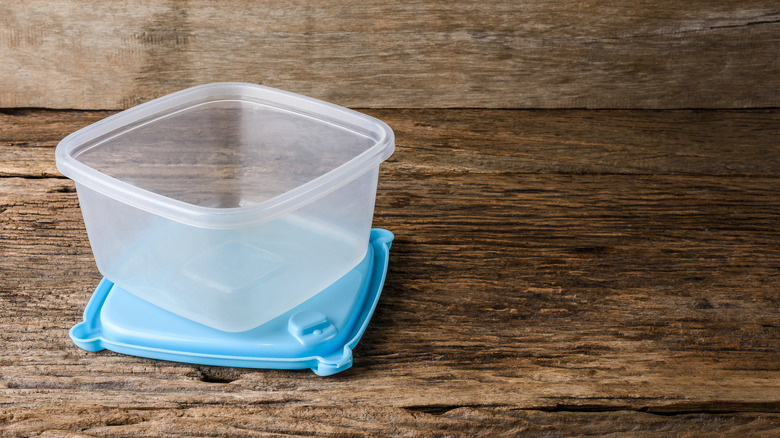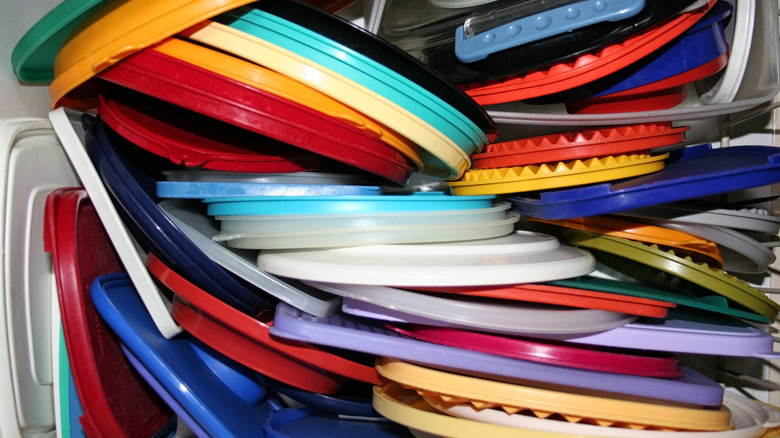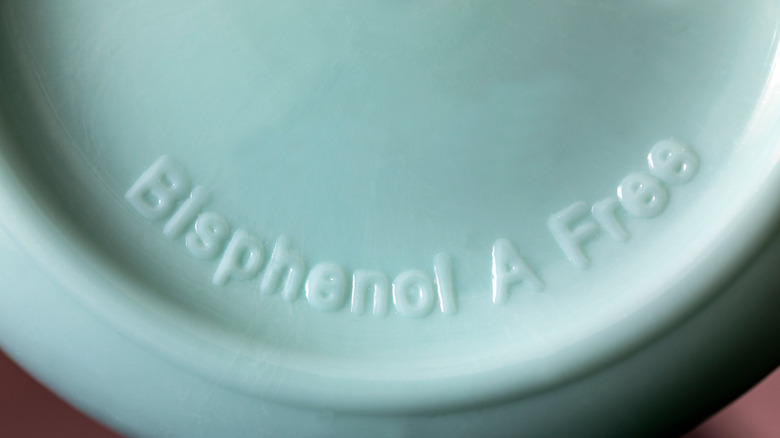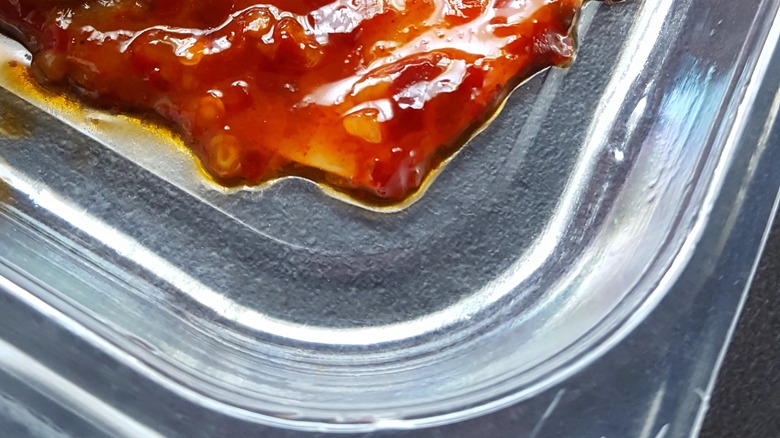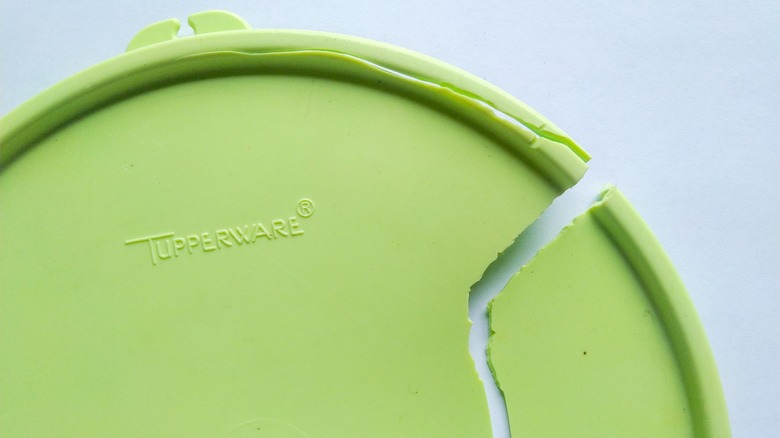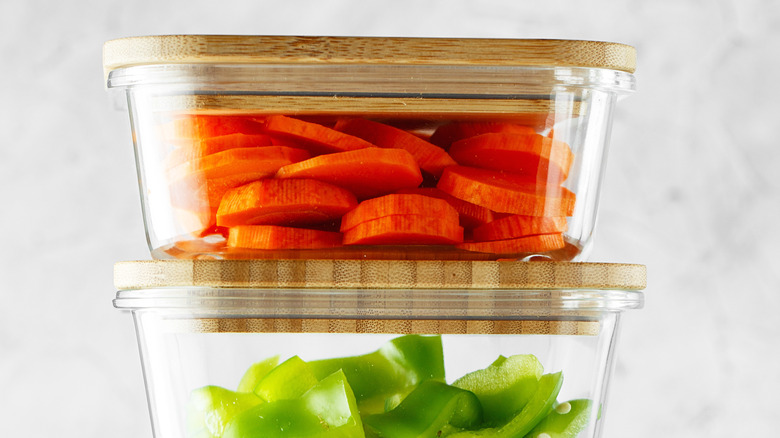Signs You Should Get Rid Of Your Current Set Of Tupperware
Tupperware has been a staple in so many households for decades. Surprisingly enough, it was created by factory worker Earl Tupper before the start of WWII, and according to Good Housekeeping, was named one of the best inventions of the century by Guinness. With so many shapes and sizes available, cleaning up and storing any type of food is made quick and simple. And with the habit of meal prepping being widely popular, having enough containers on hand is, well, handy.
As with any household items, however, quality over quantity is usually the best motto to embrace. Otherwise, holding onto excess Tupperware just in case you might need it can make daily tasks harder. Cabinets easily become cluttered and finding the one you need at the moment seems impossible. The solution is to take stock of what you own on a regular basis and know when it's time to toss something. Fortunately there are some telltale signs you should get rid of your current set and start fresh. Chances are that you'll find at least one of them when you pull out and inspect your collection.
Matching tupperware lids have become impossible
There might be nothing more frustrating than trying to locate a matching Tupperware lid and it's nowhere to be found. How they disappear is as much of a mystery as how one sock suddenly vanishes between the washer and the dryer. If you regularly find it hard to seal your leftovers, it's an indication that it's time to toss the mismatched pieces.
Make a commitment to sort through all of your Tupperware at least once per year, if not more often. Be sure to look through all of your cabinets, the dishwasher, and wherever else it may be hiding and lay everything out onto the kitchen or dining room table. Couple up as many tops with bottoms as you can and put the rest off to the side. Kitchn recommends putting the containers that are missing lids aside to use for things other than food storage. You can place them inside drawers to keep the contents more organized such as makeup, office supplies, or loose change and batteries.
The Tupperware was sold before 2010
One of the ingredients used in the making of Tupperware was Bisphenol A, or, more commonly known as BPA. It's a chemical that works to harden plastics such as food storage containers and when ingested, it can imitate estrogen and potentially affect hormone function. While the FDA's latest stand is that BPA is safe as is, many European countries have banned it and some studies have shown its connection to negative health issues including infertility (via Healthline).
If you're concerned about the potential harmful effects of the chemical on yourself and your family, you want to look for products that clearly state they are BPA free. According to Tupperware, as of March 2010, products sold in the United States and Canada are clear of BPA. So if the plastic containers you have in your kitchen were sold prior to 2010, it's a sign that you should let them go for health and safety reasons.
Tupperware stains lead to smells
Any red sauce lover knows this pain all too well. Sometimes it seems that all it takes is storing homemade tomato sauce in a Tupperware container one time for it to be permanently discolored. In fact, any type of food that is highly acidic can risk ruining the look of your plastic storage containers.
However, it doesn't mean that you should shy away from storing them, and stains alone are not necessarily a reason to let go of something. The issue is when those stains lead to a lingering smell inside the container that can potentially affect the food you store in it after the fact. If you've soaked and scrubbed the stinky container and you can still smell what you had for dinner last week, it's a sign that it has to go. Apartment Therapy suggests trying to store stinky containers without their lids for a bit to see if the smell will evaporate over time. If it doesn't, then say bye bye and look into recycling the plastic.
Parts are cracked or warped
The only thing that might be slightly more frustrating than not being able to locate a Tupperware lid is finding that it has a large crack in it. Sometimes Tupperware containers themselves can also crack or become warped by being exposed to excess heat such as in the microwave or dishwasher (even if instructions tell you it's microwave and/or dishwasher safe). If this is the case, it's time to toss the broken or non functioning pieces. If it's just the lid that's cracked or warped and the container itself is in good shape, feel free to use it to organize items as mentioned.
Another time to consider tossing it is if the Tupperware is scratched. According to Taste of Home, scratched parts of a container can be a place where bacteria hides since you're not able to properly clean it. So if you're coming across any defective Tupperware pieces, it's a sign to get rid of them.
You're ready for a change
Food storage containers have come a long way since Earl Tupper invented his iconic brand. Many people have begun steering away from plastic and purchasing glass containers which, as Reader's Digest reminds us, is a byproduct of being aware of BPA. While it's not as prevalent of an issue now that companies, such as Tupperware, have removed it from their products, it can still play a factor in upgrading your containers.
Glass containers can last longer as they are more heavy duty and not as easily stained, warped, or cracked. They also tend to be more costly, which can lead to having a quality or quantity mindset and keeping closer tabs on those loose lids. Furthermore, some like the aesthetic glass provides over traditional plastic containers.
On the flip side, you might be a lifelong Tupperware fan and prefer the lightweight feel over glass. But if the containers you have look outdated and it bothers you, consider starting fresh and treating yourself to a newer set. As long as the old set is in good working condition, keep in mind that many donation centers will accept food storage containers.
